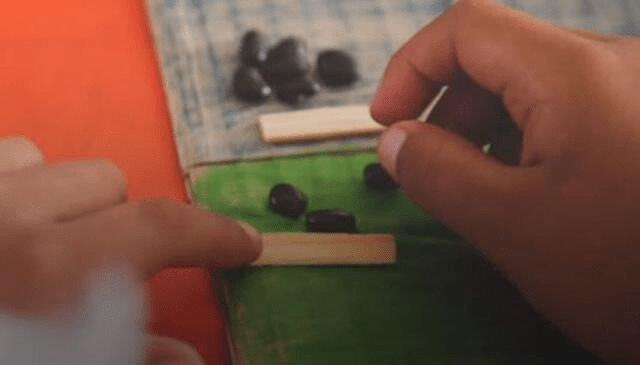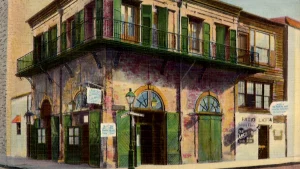Imagine learning math in ancient times where nature and the environment were the only resources for learning. Before using calculators and textbooks to learn math, ancient civilizations had to use what was available to them in their environment. Ancient civilizations such as the Mayans had a well-developed math system, but did not have the complex methods that we use today, such as calculators and textbooks. Although the Mayan mathematical system seems like something merely from the past, its importance still prevails today. Students today are learning math by using the Mayans’ math system. Learning math through the ancient ways of the Mayans proves to be effective even today.
The Mayans created the zero numerical symbol and based their math on a base-20 numerical concept. The use of the base-20 system most likely arose from the ancient people using their fingers and toes to count.1 In their numerical system, the Mayans used three symbols that were represented by objects in their environment. The first symbol was a dot, which represents the unit of one. The second symbol used was the bar, which represented 5. Once there were four individual dots, they were then combined to form a bar. The last symbol that was used was the zero.2

The environment and agriculture inspired the Mayan’s way of doing math. The Mayans relied heavily on agriculture and their environment so they incorporated what was available to them into their math system. The system the Mayans used for teaching mathematics was through the use of concrete and representational materials. To represent the dot, a small rock, bean, or seed was used. A bar was represented by sticks or twigs. The zero was represented by a shell.3

The approach Mayans use in mathematics has many benefits and advantages. Through the use of concrete objects, students are able to use manipulatives in order to do math. The use of this model helps put an abstract concept like math and simplify it into a concrete concept.4 This system does not use numbers when doing math but instead manipulates objects that represent the numbers in order to perform an operation. Through the use of the Mayan mathematical concepts, students are able to do math in a tangible way that is simple and fun. Doing math using simple processes prevents students from having to memorize extensive amounts of information.5
Throughout the years, math shifted from the Mayan mathematical system to the mathematical system we use today. Colonization of the descendants of the Mayans by Spanish conquistadores and missionaries greatly influenced and shifted their unique practices, such as mathematics. Throughout the years Spanish rule influenced and altered the Mayan civilization. One of the Spanish conquistadores that caused the greatest change to the Mayan society was Diego de Landa. In 1541, Diego de Landa requested to be sent to the New World as a missionary. Diego visited the great cities of the Maya in order to gain insight about their history and culture. However, when Diego came across practices he did not agree with, he took drastic measures to enforce changes in the Mayan society. Diego was determined to enlighten the Mayans, even by force, by gathering their documents and burning them.6
The methods used by the Mayans more than 2,000 years ago was rediscovered by Luis Fernando Magaña, a professor of physics at Mexico’s National Autonomous University. Through Magaña’s interest in the Mayan numerical system, he was inspired to share his findings with others. Magaña would introduce and educate administrators and teachers in the Mayan system to help him reach his goal of implementing this new math system in schools.7
In 2010, the Mayan mathematical system was adopted into math teaching programs in schools located in Yucatan and in Indigenous zones. The integration on teaching math using the Mayan mathematical system has not been formally adopted into the math curriculum, but more teachers are using it to teach math in their classrooms.8 Magaña personally trains the educators himself, to ensure the quality of the Mayan mathematical system being properly taught to students.9
Using the mathematical system of the Mayans has brought about good results. In 2011, a year after the Mayan mathematical system was first used in classrooms, students have shown better math results in preschool and elementary.10 The Mayan mathematical system not only brings academic benefits but also helps students in Yucatan and Indigenous zones to learn math like their ancestors.11
- J J O’Connor, and E F Robertson, “Mayan mathematics,” MacTutor History of Mathematics, (2009), http://www-history.mcs.st-and.ac.uk/HistTopics/Mayan_mathematics.htm. ↵
- Salem Press Encyclopedia Of Science, 2013, s.v. “Central American mathematics,” by Judith E. Beauford. ↵
- Rafael Lara-Alecio, Beverly J. Irby, and Leonel Morales-Aldana, “A mathematics lesson from the Mayan civilization,” Teaching Children Mathematics 5, Professional Development Collection, no. 3 (1998): 2-3. ↵
- Rafael Lara-Alecio, Beverly J. Irby, and Leonel Morales-Aldana, “A mathematics lesson from the Mayan civilization,” Teaching Children Mathematics 5, Professional Development Collection, no. 3 (1998): 2-3. ↵
- L.F. Magana, “The Ludic and Powerful Mayan Mathematics for Teaching,” Procedia – Social And Behavioral Sciences 106, International Conference on New Horizons in Education, no. 4 (2013): 2930. ↵
- J J O’Connor, and E F Robertson, “Mayan mathematics,” MacTutor History of Mathematics, (2009), http://www-history.mcs.st-and.ac.uk/HistTopics/Mayan_mathematics.html. ↵
- J J O’Connor, and E F Robertson, “Mayan mathematics,” MacTutor History of Mathematics, (2009), http://www-history.mcs.st-and.ac.uk/HistTopics/Mayan_mathematics.html. ↵
- L.F. Magana, “The Ludic and Powerful Mayan Mathematics for Teaching,” Procedia – Social And Behavioral Sciences 106, International Conference on New Horizons in Education, no. 4 (2013): 2929. ↵
- J J O’Connor, and E F Robertson, “Mayan mathematics,” MacTutor History of Mathematics, (2009), http://www-history.mcs.st-and.ac.uk/HistTopics/Mayan_mathematics.html. ↵
- L.F. Magana, “The Ludic and Powerful Mayan Mathematics for Teaching,” Procedia – Social And Behavioral Sciences 106, International Conference on New Horizons in Education, no. 4 (2013): 2930. ↵
- Salem Press Encyclopedia Of Science, 2013, s.v. “Central American mathematics,” by Judith E. Beauford. ↵



39 comments
Aneesa Zubair
This is such an amazing topic! Not many people know about the Mayan mathematic system. It’s really nice that the Yucatan and other parts of Mexico are beginning to incorporate it into school curricula so that Mayan students can learn like their ancestors did. I wonder if this system could be expanded to schools outside of Mexico; it looks like a much better and more hands-on way for children to learn.
Jose Fernandez
I really enjoyed reading this article. I think it is a very interesting topic and both the title and the images caught my attention easily. I enjoy math and I think it is important to know how it was learned and practiced when technology wasn’t available. I really liked how the author described the method the Mayans used in the past and then talked about the indigenous that still apply that method. It is very well written and it has a good structure.
Ximena Mondragon
Wow, this article is so interesting because I actually did not know how Mayans incorporated math into their society. I actually like their method better since it makes more sense. Also, I am glad to learn that students are being through that method. Overall, I this article is very well written and it gets to the point. I think a video of the actual system would of been helpful for the visual leaders like me.
Donte Joseph
Everyone has their own ways of learning and I think that the Mayans way is not only creative but obviously effective. It’s amazing to read how the Mayans set the standard for people to be able to build and learn more methods to math. I feel that for students that may not understand or fully grasp the new methods of math, maybe teaching them old methods could help. Overall I am glad that this article explains the history with great detail.
Kathyleen Lauriano
This article was interesting to read. The fact that they relied on their agriculture and environment shows how truly resourceful the Mayans were. I never knew this was a way of learning. I think that if we were to try out this math system then many kids would be more interested in math. This article was well written and I learned a lot from it. Great job!
Faten Al Shaibi
Despite the primitive of the calculation method used by the Mayans, but proved to be useful to this day, they were a superior and intelligent people , where they could find their way In complex mathematics world.
I hope to apply the method of the Mayans in all schools to make it easier for the students to solve the mathematical question successfully.
Dylan Sanchez
This is such an interesting way to have Mayans grow a passion for mathematics by seeing how their ancestors did. It’s truly a way to keep them in awe and wonder while actually doing mathematics. In my opinion, they are using a system that is tough in comparison to other basic systems. However, this could even give them a head start on their mathematical endeavors to fine some more challenging things.
Lynsey Mott
First congrats Sofia! This article was very informing and a lot of what you mentioned in the article I did not know. I learned a little bit about it when I took geometry, its weird to think how far back math goes, and that if it weren’t for the Mayans, we probably wouldn’t have progressed as much as we had. It probably have taken a lot longer for us to figure what the Mayans figured out. I never knew that they used twigs to count to five, but they had to use something to count right?
Montserrat Moreno Ramirez
Mayan civilization is one of the most important in Mexican culture. It has left so much knowledge and great concepts. Mathematically speaking, they used a system that is still tough in many school just for culture and in my personal opinion I think is a great way to engage students into math, since they see it in a different not to tedious way.
very interesting!
Sebastian Carnero
I think one of the problems the mathematic ways of learning have today is in transmitting interest to students. I believe there is no such thing as a math person, no one is incapable of understanding math. I think that if math was incorporated in a more as it is described in the article, as a tangible, relatable and fun operation(games for example), fewer people would associate math with thoughts of “too complex” or a “drag”.